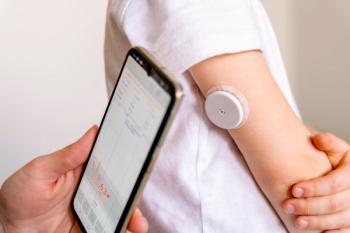
Simultaneous Zoster, Inactive Quadrivalent Influenza Vaccination Shows Acceptable Safety for Older Adults
Key Takeaways
- Simultaneous RZV and aIIV4 administration is safe for adults 65+, with non-inferior safety compared to RZV-HD-IIV4.
- The study involved 267 participants, with similar severe adverse event rates between vaccine groups.
The simultaneous doses of both vaccines compared with individual RZV and quadrivalent high-dose inactivated influenza vaccine (HD-IIV4, Fluzone; Sanofi) had similar overall safety findings.
The simultaneous administration of recombinant zoster vaccine (RZV, Shingrix; GSK) and inactive quadrivalent influenza vaccine (aIIV4, Fluad; CSL Seqirus) is an acceptable option for adults 65 years and older, according to results of a study published in JAMA Network Open. The simultaneous administration of both vaccines compared with the RZV and quadrivalent high-dose inactivated influenza vaccines (HD-IIV4, Fluzone; Sanofi) had similar overall safety findings.1
The study was randomized and blinded and was conducted during the 2021-2022 and 2022-2023 influenza seasons. Older adults from Duke University Medical Center and from Johns Hopkins University Medical Center were included. Individuals received either the RZV and aIIV4 or RZV and HD-IIV4 vaccines simultaneously and underwent a 7-day post-injection assessment period to determine the safety and tolerability between the 2 groups. Serious adverse events (AEs) and AEs of interest were assessed 43 days after vaccination as well as health-related quality of life assessments on days 1 through 8.2
The primary outcome was the number of individuals who experienced at least 1 severe AE after the first dose of RZV in the group aged 65 to 69 years, and in the group 70 years and older. The secondary end points included the number of individuals with at least 1 severe AE after 1 dose of RZV in the intention-to-treat population for up to 43 days after vaccination, according to the clinical trial information.2
According to the results, a total of 267 individuals with a median age of 71 years and 51.3% men were included in the study. The authors reported that 120 received RZV dose 1 and allV4 whereas 137 received RZV dose 1 and HD-IIV4.1
Investigators reported that the proportion of individuals who had at least 1 severe solicited reactogenicity event was non-inferior in the RZV-aIIV4 group compared with the RZV-HD-IIV4 group, at 11.5% and 12.5%, respectively. For local reactogenicity events, the proportions were 6.2% and 4.4%, respectively. For systemic reactogenicity events, the proportions were 5.4% and 9.6%, respectively.1
Furthermore, investigators said that the frequency of moderate to severe reactions were similar in both groups, but RZV dose 1 or dose 2 and aIIV4 did not meet the noninferiority criteria compared to doses 1 and 2 and HD-IIV4 for moderate to severe reactions. In the 43-day follow-up period, there were no Guillain-Barré syndrome or deaths reported, but 1 individual in the RZV-aIIV4 group and 5 in the RZV-IIV4 group experienced severe AEs. For the different age groups, investigators found similar clinical patterns for severe reactions, and no individual sought medical attention for a local or systemic reaction after vaccination days 1 to 8 after either RZV dose 1 or 2, according to the findings.1
Additionally, the health-related quality of life scores were similar in both study groups and there were minimal changes from day 1 through day 8 after vaccination, with similar changes in both groups. In the entire study period, 9 individuals reported serious AEs with 4 in the HZV-aIIV4 group and 5 in the RZV and HD-IIV4 group.1
REFERENCES
1. Schmader KE, Walter EB, Talaat KR, et al. Safety of Simultaneous Vaccination With Adjuvanted Zoster Vaccine and Adjuvanted Influenza Vaccine: A Randomized Clinical Trial. JAMA Netw Open. 2024;7(10):e2440817. Published 2024 Oct 1. doi:10.1001/jamanetworkopen.2024.40817
2. Simultaneous RZV and aIIV4 Vaccination. ClinicalTrials.gov identification: NCT05007041. Updated July 11, 2024. Accessed October 31, 2024. https://clinicaltrials.gov/study/NCT05007041?cond=NCT05007041&rank=1
Newsletter
Stay informed on drug updates, treatment guidelines, and pharmacy practice trends—subscribe to Pharmacy Times for weekly clinical insights.




















































































































































































































